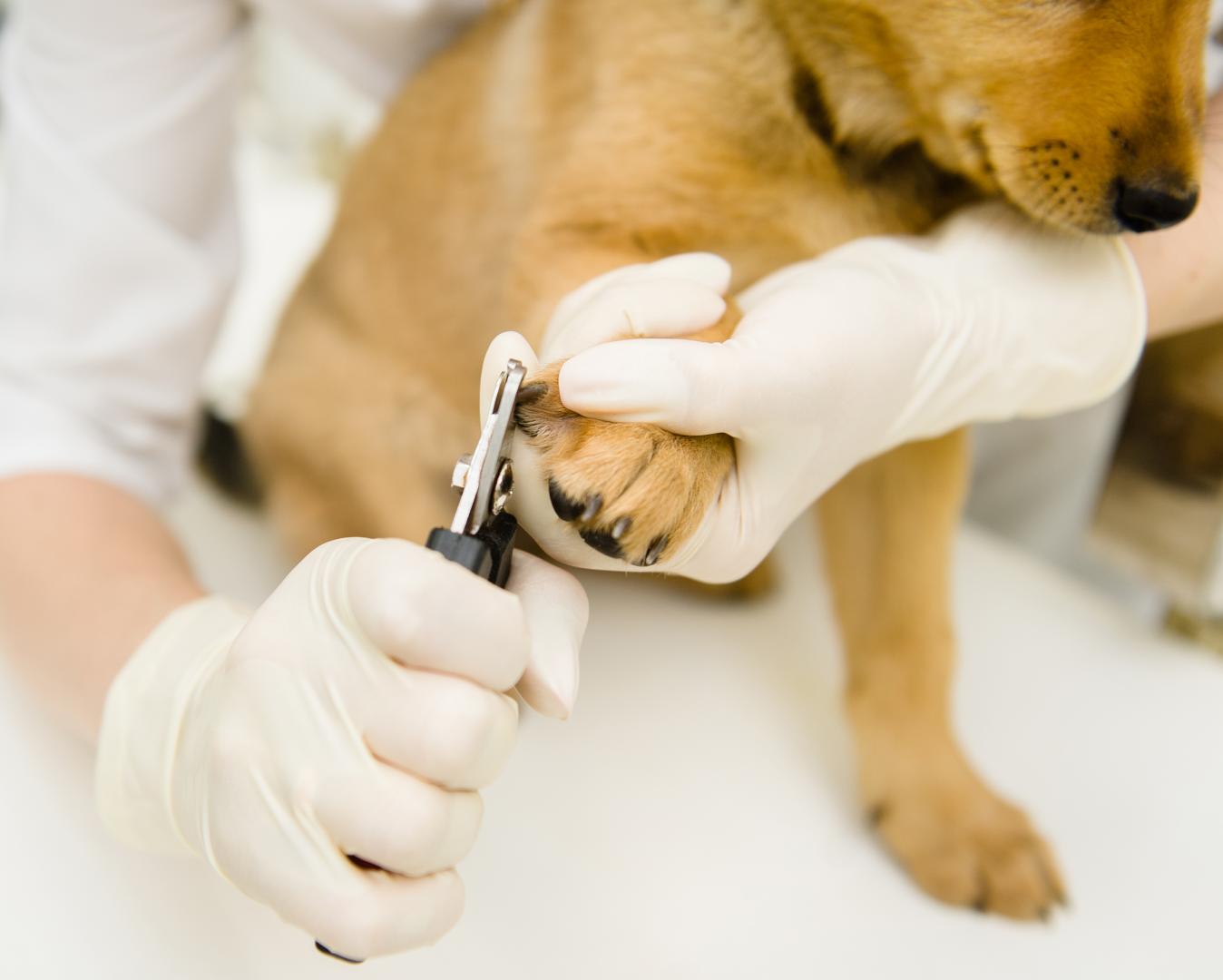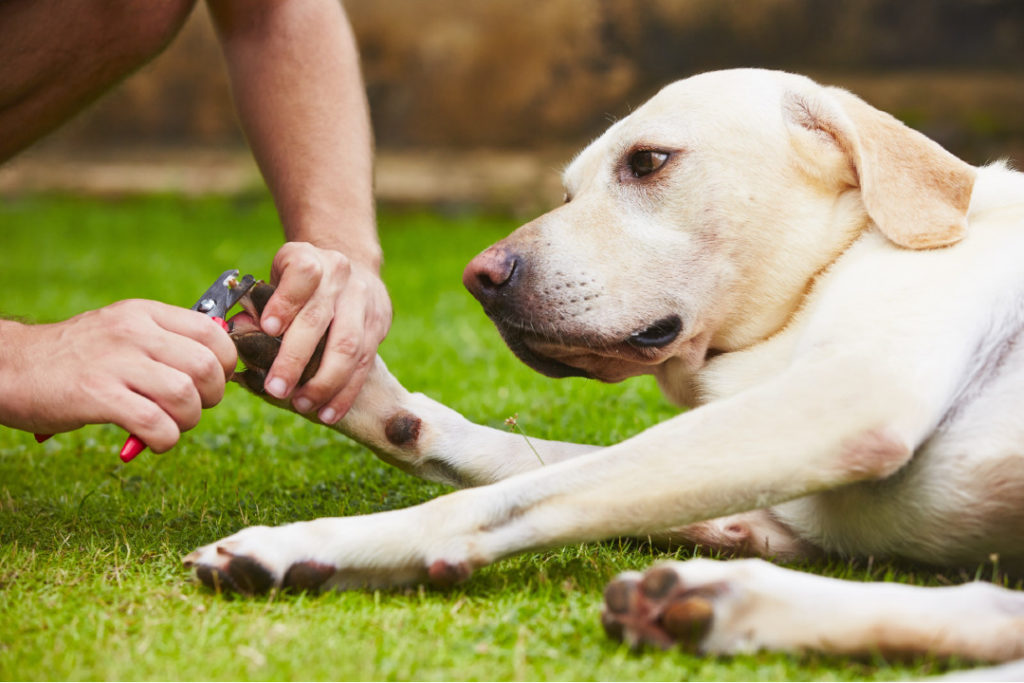You’re a responsible pet parent – but do you know how to trim dog nails? Just like us people, dogs need to get their nails done too. Besides basic hygiene, it’s also important for their overall health and yours. Overgrown nails on dogs can be quite painful for them and can even lower their overall quality of life. To give your furry friend the ultimate nail trimming experience, learn all you can about clipping dog nails below.
Why Is It Necessary to Trim Dog Nails?
When dog nails grow too long, not only is it uncomfortable, but it can cause other serious issues. Your dog might experience spine and posture problems with time due to continually changing weight because of overgrown nails. Overgrown nails can make it hard for your dog to walk properly, especially if they’re so long that they reach the ground. In general, too-long nails can limit your dog’s range of motion.
That being said, as soon as your dog’s nails reach the ground and grow past the pad of its paw, it’s time for a little grooming!
How to Check If My Dog’s Nails Are Too Long?

Are the nails touching the ground? If yes, then it’s time to take action. If you hear your dog’s nails clicking when he walks, or they turn sideways, it’s time for a trim. Now that you’ve identified that they’re too long, how do you go about cutting your dog’s nails?
How to Trim Dog Nails?
Step 1: Gather Your Tools
- Dog nail clippers/scissors/grinder
- Scissors
- Flashlight (for dark nails)
- Paw balsam (Optional)
When you’ve gathered everything, get your dog as comfortable as you can, and you’re ready to go. If your dog usually gets nervous or agitated when they see the clippers, calm them down with some treats or cuddles. This will give them a sense of assurance while you start trimming.
Step 2: Define the Cutting Range
Be extra cautious when choosing where to trim, as dog nails are filled with blood. An accidental, unexpected cut in the wrong spot could lead to a lot of bleeding and pain. It’s easier to find the right angles for dogs with clear or light-colored nails, while it can be trickier for dogs with dark nails. Remember the flashlight? Well, a flashlight can help you better see the blood supply area, so you don’t make a mistake.
Keep these tips in mind, and your dog will be fine:
- The ideal cutting range ends immediately before the blood supply.
- Front paws are more likely to become overgrown nails.
- Always cut parallel to the bottom.
Step 3: Get to Trimming
Now you’ve defined the cutting range, and your dog is in a comfortable position. You have your tools on hand. It’s time to start trimming!
Trim gently and carefully, and use rewards to keep your dog distracted and calm if required. If there’s zero blood at the end of the trimming session and your dog hugs you as if nothing happened, you’ve done it right – good job!
After you’re done cutting, you can moisten the skin around the nails with some paw balsam. Although optional, it can be exceptionally comforting for your dog. Cut the hair between the paws for impeccable results.
Step 4: Reward Your Furry Friend
Remember that trimming sessions don’t always go so smoothly, so don’t forget to reward your dog after! That way, he will associate the scary experience of nail trimming with something positive – that way, the next time will be as smooth as it was the first time around.
In Case of Bleeding After Dog Nail Trimming
Even if you’re very careful and gentle, something may go wrong. If you see a little bit of blood on your dog’s nail, don’t panic. Instead, try to stop the blood flow and don’t let any dirt get in contact with the cut. This will keep it from getting infected. If the blood doesn’t stop after 10-20 minutes, call your vet.
If your vet is unreachable and you need to act quickly, apply styptic powder to the wound. If you don’t have any styptic powder and you can’t leave the house to go to a pharmacy, apply some ice cubes to the wound until your vet gets back to you.
How Often Do I Trim My Dog’s Nails?

Dogs who walk on soft ground (like parks or indoor surfaces) will have a more challenging time maintaining the length of their nails than dogs used to hard ground such as concrete or rocks. However, that’s not the only determinant at play. Dog nail trimming requirements are also influenced by:
- Dog breed
- Genetic factors
- Feeding habits
- Level of activeness
Overall, we recommend trimming your dog’s nails every two weeks to keep the ideal nail length. We’ll let you in on a little secret, the more you trim their nails, the more the blood vessel will recede into the claw. Therefore, regular dog nail trimming is essential.
More Tips and Tricks to Keep Your Dog Happy
Now that you’re a specialist in dog nail trimming, consider some additional ways to make sure your dog is always happy and healthy. Here are some top tips to best care for your dog:
- Teach your dog to understand and follow basic commands for safety.
- Make sure your dog never gets lost with a GPS tracker for dogs.
- Keep unhealthy toxins out of your dog’s range.
- Make sure your dog is active with the aid of activity monitoring.
Takeaway
If you have any concerns about your dog’s overgrown nails or his overall health status, talk with your vet. They’ll be able to offer you the best advice and medication for your dog.
